1. Nickson D, Siddons S. Remote Working: Linking People and Organizations. Burlington, MA, USA: Taylor & Francis;2012.
2. Bishop L, Gale L, Laverty M. Responding to injuries in remote and rural Australia. Canberra, Australia: Royal Flying Doctor Service of Australia;2016.
3. Comcare. Comcare's Guide to Remote or Isolated Work. Canberra, Australia: Comcare;2013.
4. Reddy R, Kafoa B, Wainiqolo I, Kool B, Gentles D, McCaig E, et al. Workplace injuries in Fiji: a population-based study (TRIP 7). Occup Med (Lond). 2013; 63(4):284–286. PMID:
23535710.

5. CRANA. Remote Health Workforce Safety & Security Report: Literature Review, Consultation & Survey Report. Cairns: CRANAplus, Australia;2017.
6. Pine R, Konidari V. Islands of the Mind: Psychology, Literature and Biodiversity. Newcastle, UK: Cambridge Scholars Publishing;2020.
7. Ko KH, Moon G, Sohn SJ, Choi JS. The survey on the health status of an islands-district residents: I. 2 week-prevalence of morbidity and its related factors. Korean J Rural Med. 1992; 17(2):103–111.
8. Im JS, Kim CY. Health care problems and solutions among island inhabitants. Korean J Rural Med. 2002; 27(1):185–196.
9. Kim NO, Lee MW. A study on the sustainable marine ecology tourism development plan for islands in Korea. Int J Tourism Hosp Res. 2020; 34(6):21–41.

10. Iordache R, Mihaela S, Viorica P, Ileana G. Working in isolation. Risk factors and effects on mental health state. In : Proceedings of Occupational Risk Prevention Conference (ORP 2014); 2014 May 21-22; Zaragoza, Spain. Madrid, Spain: Occupational Risk Prevention;2014.
11. Kim KT, Choi S, Park MJ, Park S, Ko S, Park H. The effect of family structures and psycho-social factors on suicidal ideation of senior citizens. J Welf Aged. 2011; 52:205–228.
12. Cho S, Lee TK, Bang YW, Kim CJ, Im HJ, Kwon YJ, et al. Factors associated with unmet needs for medical care among island inhabitants in Korea. J Agric Med Community Health. 2010; 35(2):151–164.

13. Kim HH, Kim DB, Song HH, Hwang GY, Kong WS. Phytogeographical characteristics of outermost islands in the Korean peninsula. J Korean Geogr Soc. 2018; 53(2):117–132.
14. Choi SB, Yoon JH, Lee W. The Modified International Standard Classification of Occupations defined by the clustering of occupational characteristics in the Korean Working Conditions Survey. Ind Health. 2020; 58(2):132–141. PMID:
31527354.
15. Lee BO, Lee CH, Lee PG, Choi MJ, Namkoong K. Development of Korean Version of Alcohol Use Disorders Identification Test (AUDIT-K): its reliability and validity. J Korean Acad Addict Psychiatry. 2000; 4(2):85–92.
16. Han MA, Kim KS, Park J, Kang MG, Ryu SY. Association between levels of physical activity and poor self-rated health in Korean adults: the third Korea National Health and Nutrition Examination Survey (KNHANES), 2005. Public Health. 2009; 123(10):665–669. PMID:
19854457.

17. Sohn SI, Kim DH, Lee MY, Cho YW. The reliability and validity of the Korean version of the Pittsburgh Sleep Quality Index. Sleep Breath. 2012; 16(3):803–812. PMID:
21901299.

18. Han C, Jo SA, Kwak JH, Pae CU, Steffens D, Jo I, et al. Validation of the Patient Health Questionnaire-9 Korean version in the elderly population: the Ansan Geriatric study. Compr Psychiatry. 2008; 49(2):218–223. PMID:
18243897.

19. Lee S, Huh Y, Kim J, Han C. Finding optimal cut off points of the Korean version of the Patient Health Questionnaire (PHQ-9) for screening depressive disorders. J Korean Soc Depress Bipolar Disord. 2014; 12(1):32–36.
20. Ahn J, Cho SS, Kim HR, Myong JP, Kang MY. Comparison of work environment and occupational injury in direct and indirect employment in Korea and Europe. Ann Occup Environ Med. 2019; 31(1):e24. PMID:
31620301.

21. Breslow NE, Day NE. Statistical methods in cancer research. Volume II--The design and analysis of cohort studies. IARC Sci Publ. 1987; (82):1–406.
22. Lehmann J. Human services management in rural contexts. Br J Soc Work. 2005; 35(3):355–371.

23. Kouabenan DR, Medina M, Gilibert D, Bouzon F. Hierarchical position, gender, accident severity, and causal attribution. J Appl Soc Psychol. 2001; 31(3):553–575.

24. Park JH, Sung JH, Sim CS, Lee CB, Park SJ, Lee JH, et al. Associations between physical factors and working conditions and occupational injuries among Korean workers. J Korean Soc Occup Environ Hyg. 2015; 25(3):405–417.

25. Waehrer GM, Miller TR. Does safety training reduce work injury in the United States? Ergon Open J. 2009; 2(1):26–39.

26. Dainty AR, Ison SG, Root DS. Bridging the skills gap: a regionally driven strategy for resolving the construction labour market crisis. Eng Construct Architect Manag. 2004; 11(4):275–283.

27. Mitullah WV, Njeri Wachira I. Informal Labour in the Construction Industry in Kenya: a Case Study of Nairobi. Nairobi, Kenya: International Labour Organization;2003.
28. Nichols T. The Sociology of Industrial Injury. London, UK: Mansell;1997.
29. Cassell C, Nadin S, Gray M, Clegg C. Exploring human resource management practices in small and medium sized enterprises. Person Rev. 2002; 31(6):671–692.

30. Youn I. Analysis of factors affecting prehospital time of emergency department patient with occupational injury [dissertation]. Seoul, Korea: Seoul National University;2013.
31. Stephen L, Laird I, Olsen K, Hasle P. Creating healthy work in small enterprises - from understanding to action: Summary of current knowledge. Small Enterp Res. 2014; 21:139–147.
32. Eakin J. Towards a ‘Standpoint’ perspective: health and safety in small workplaces from the perspective of the workers. Policy Pract Health Saf. 2010; 8(2):113–127.

33. Park JS. Micro-scale workplaces with fewer than 5 employees need attention from occupational health. Occup Health. 2017; (350):2–5.
34. McDonell AC, Veitch C, Aitken P, Elcock M. The organisation of trauma services for rural Australia. Australas J Paramedicine. 2009; 7(2):990308.

35. Orthner DK, Rose R. Work separation demands and spouse psychological well-being. Fam Relat. 2009; 58(4):392–403.

36. Dawson C, Veliziotis M, Hopkins B. Temporary employment, job satisfaction and subjective well-being. Econ Ind Democracy. 2017; 38(1):69–98.




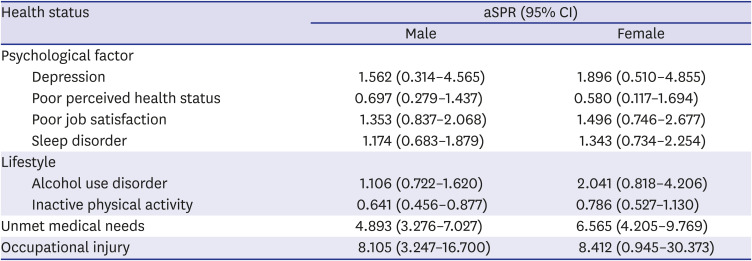
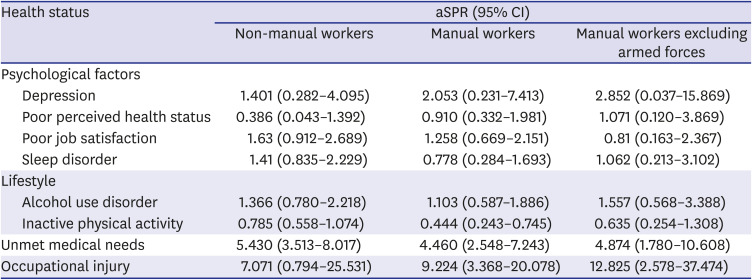
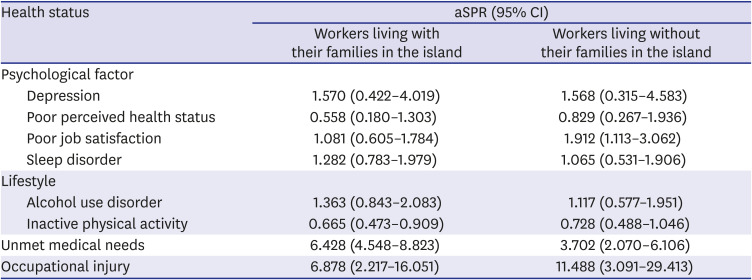




 PDF
PDF Citation
Citation Print
Print



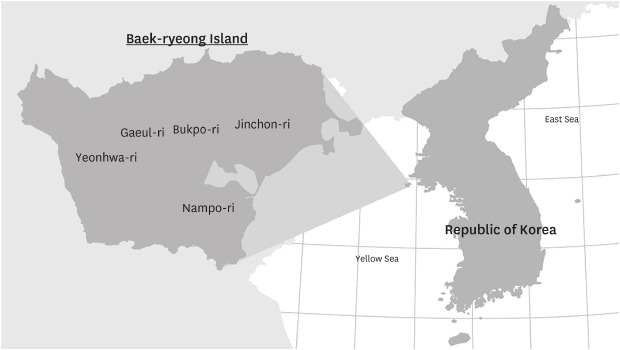
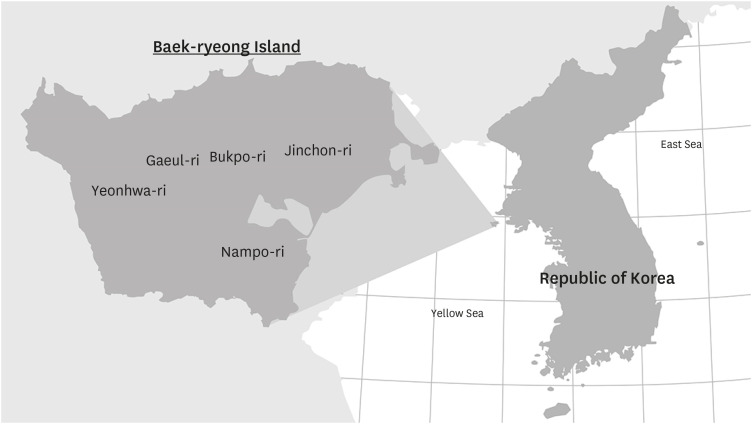
 XML Download
XML Download